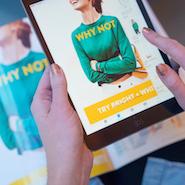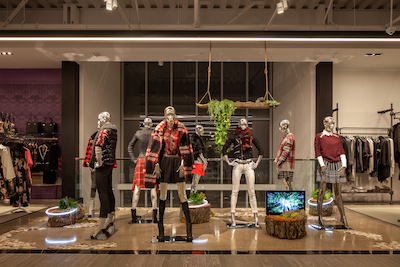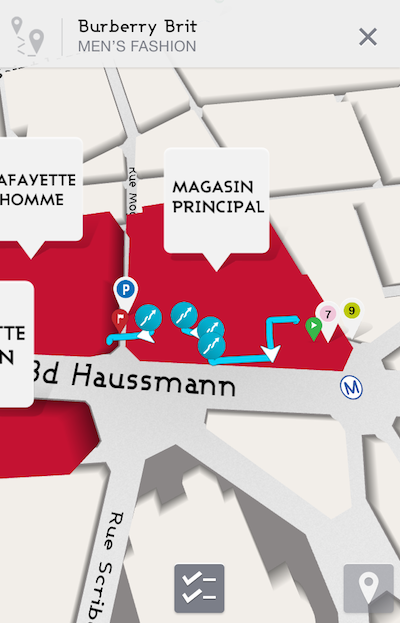Real-time retail will revolutionize shopping as we know it: report
By
February 23, 2015
Within the next two years, approximately 300 percent more retailers plan to deploy mobile point-of-sale tactics into in-store strategies, according to a new report from Boston Retail Partners.
After slowly coming to terms with the importance of mobile in a bricks-and-mortar setting, retailers are now embracing the opportunities this technology presents. Mobile devices have become omnipresent in the lives of consumers and have had a significant impact on retail and the shopping experience, causing retailers to adapt to catch up with modern behavior.
“We have heard a lot of talk about mobile POS for several years but not a lot of action by retailers,” said Ken Morris, principal at Boston Retail Partners, Boston. “One of the most surprising finding in the BRP “2015 POS/Customer Engagement Benchmarking” survey was the dramatic increase in the percentage of retailers that plan to deploy mobile POS in the next two years.
“Today, only 15 percent of the retailers surveyed have implemented mobile POS, but another 43 percent of retailers plan to install it in the next two years – that’s a 287 percent increase.”
Boston Retail Partner’s “Mobile Technology — Transforming the Customer Experience” is a supplement to its “2015 POS/Customer Engagement Benchmarking Survey.” To understand the impact mobile has on retail, Boston Retail Partners surveyed top retailers in the United States to explore the current state of mobile in relation to retail capabilities, priorities and processes.
For the benchmark, Boston Retail Partners sent surveys to more than 500 leading North American retailers. The majority of respondents represent specialty retail, and 58 percent of respondents have annual sales of $1 billion or more.
Mobile ready
With the introduction of mobile devices in an in-store setting, retailers are presented with an opportunity to better serve their consumers from checking inventories to speeding up the purchase process.
With the introduction of mobile devices in an in-store setting, retailers are presented with an opportunity to better serve their consumers from checking inventories to speeding up the purchase process.
Boston Retail Partners found that when mobile technologies are integrated three key areas are impacted the most in a retail situation. These areas include mobile POS, customer-facing mobile services and mobile payment.
“Mobile devices have become ubiquitous in the lives of consumers, dramatically changing how they shop,” Mr. Morris said. “Having a constant, virtually unlimited amount of information at their fingertips has changed consumers’ shopping behavior and elevated their expectations for customer service.
“Consumers now use mobile devices to research products, compare prices, complete purchases online and increasingly to pay for in-store purchases,” he said. “Consumers expect this level of service because they know it is possible and retailers.”
Mobile POS brings the checkout process to the sales floor and allows the the store associate to finalize a purchase the moment a decision is made. This also allows the sales associate more freedom to navigate the boutique and interact with her consumers rather than being chained to a cash register.
Consumer inquiries can also be answered easily through the use of a mobile device, whether the concern is related to sizing or product availability and information. Also, a “mobile” sales associate will establish a more personalized relationship with the consumer instead of just being a go-to for finalizing a purchase.
Twenty-four percent of respondents of the 2015 POS/Customer Engagement Benchmarking Survey answered that mobile POS is on their top three priorities (see story). Of these respondents, 15 percent have installed mobile POS and 43 percent have plans in motion within a two-year time frame.
This is a 373 percent increase from the year-ago survey’s results.
Some retailers, 43 percent, expressed an interest in allowing consumer-owned mobile devices into the POS mix in the future. Nineteen percent plan to make this a reality within the next two years.
These changes to in-store strategy are motivated by the change in consumer expectation and behavior, but are not without their challenges.
Respondents identified choosing the right mobile technology, updating back-end systems to support mobile POS and quantifying the benefits of capturing lost sales and increased consumer satisfaction as challenges.
Consumers now expect the same degree of information and interaction found online to be a part of the in-store experience. Retailers have begun to leverage consumer-facing technologies to enhance in-store encounters.
Geolocation is one such strategy that retailers hope to increase the use of, with 224 percent more respondents planning to implement the technology within a three-year time frame. Doing so will connect with consumers in real-time while in a bricks-and-mortar location or in a specific radius.
This personal approach to interacting with consumers is also reflected in personalized recommendations through tracking taste, shopping history and even the opinions of her peers to curate promotions and shopping suggestions. Within three years, 165 percent more retailers plan to offer these services to consumers.
Similarly, 224 percent more retailers plan to increase mobile loyalty identification programs. These programs will identify a consumer as she enters a store and immediately offer personalized services.
Of course, these programs to some consumers may verge on the line of intrusion and annoyance, but as more come to depend on their mobile devices for all areas of daily life, mobile retail practices will become just as common place.
What’s in your wallet?
With security concerns set aside, consumers are also beginning to embrace mobile payments, such as Apple Pay and PayPal, and retailers are moving toward implementing the latest technology in purchasing options.
With security concerns set aside, consumers are also beginning to embrace mobile payments, such as Apple Pay and PayPal, and retailers are moving toward implementing the latest technology in purchasing options.
But, the adaption has been slow with only 13 percent of retail respondents accepting PayPal and only 8 percent allowing purchases to be made using Apple Pay. But, within three years, 50 percent and 48 percent of retailers plan to accept these payment options, respectively.
Apple Pay continues to add more partners, including a number of new banks, which will drive perceived value for consumers and encourage more banks as well as retailers to jump on board.
The news comes as reports have surfaced that Samsung is in talks with LoopPay to introduce its own mobile payments solution next year, one that would conceivably be more widely available as LoopPay works with legacy point-of-sale terminals. Samsung’s interest points to the significant stakes involved, with in-store proximity payments expected to take off in the next few years (see story).
All businesses are focused on getting paid, and optimizing a consumer’s payment experience can lead to higher conversion rates, especially in the mobile space. Visa Checkout can bring consumers a quick and direct way for consumers to make payments on fashion, apparel, travel and everyday items (see story).
Among luxury brands, U.S. department store Neiman Marcus has added Visa Checkout as a payment method for its ecommerce site to make shopping online easier for its consumers.
Through Visa Checkout, consumers create one account and then login on participating sites, without having to enter their credit card information every time. The more work consumers have to do to make a purchase, the more likely they are to abandon their carts, so this new method of payment should increase the likelihood of conversion (see story).
As mobile technolgies become more trusted the opportunities for reatilers are significant.
“Mobile devices have unlimited opportunities for retailers to enhance the customer experience, create operational efficiencies and reduce in-store technology costs,” Mr. Morris said. “We expect to see a significant increase in retailers leveraging more real-time customer data to improve customers’ in-store experience and prevent lost sales.
“More retailers will know what’s in their customer’s closet, what their social media habits are and what they are looking at online,” he said. “Real-time retail is the future and it will revolutionize retail as we know it.”





ReplyDeleteI got such a good information on this topic it’s a very interesting one. You made a good site and I have found a similar website,please check this one
customer experience benchmarking visit the site to know more about Omdata.